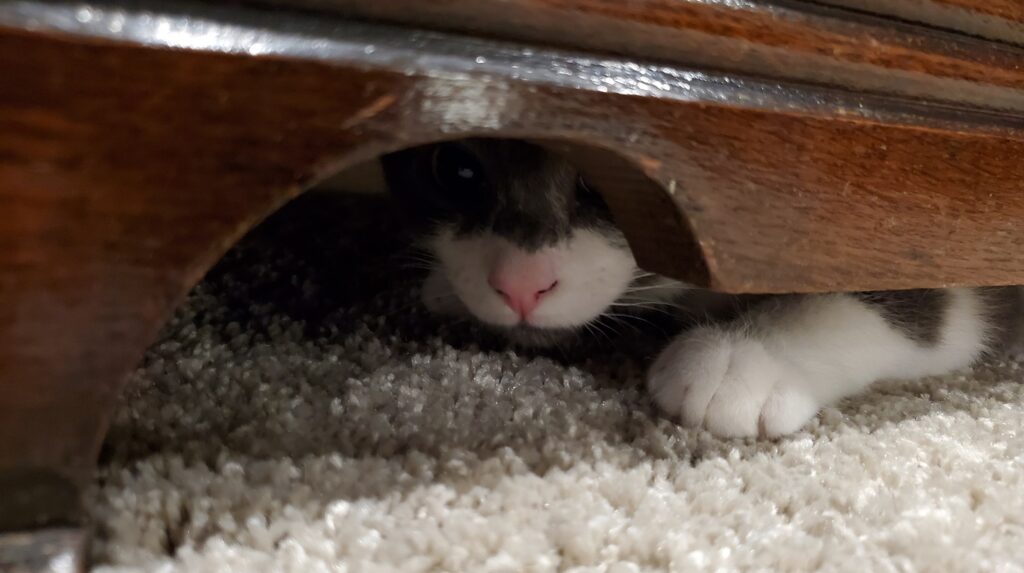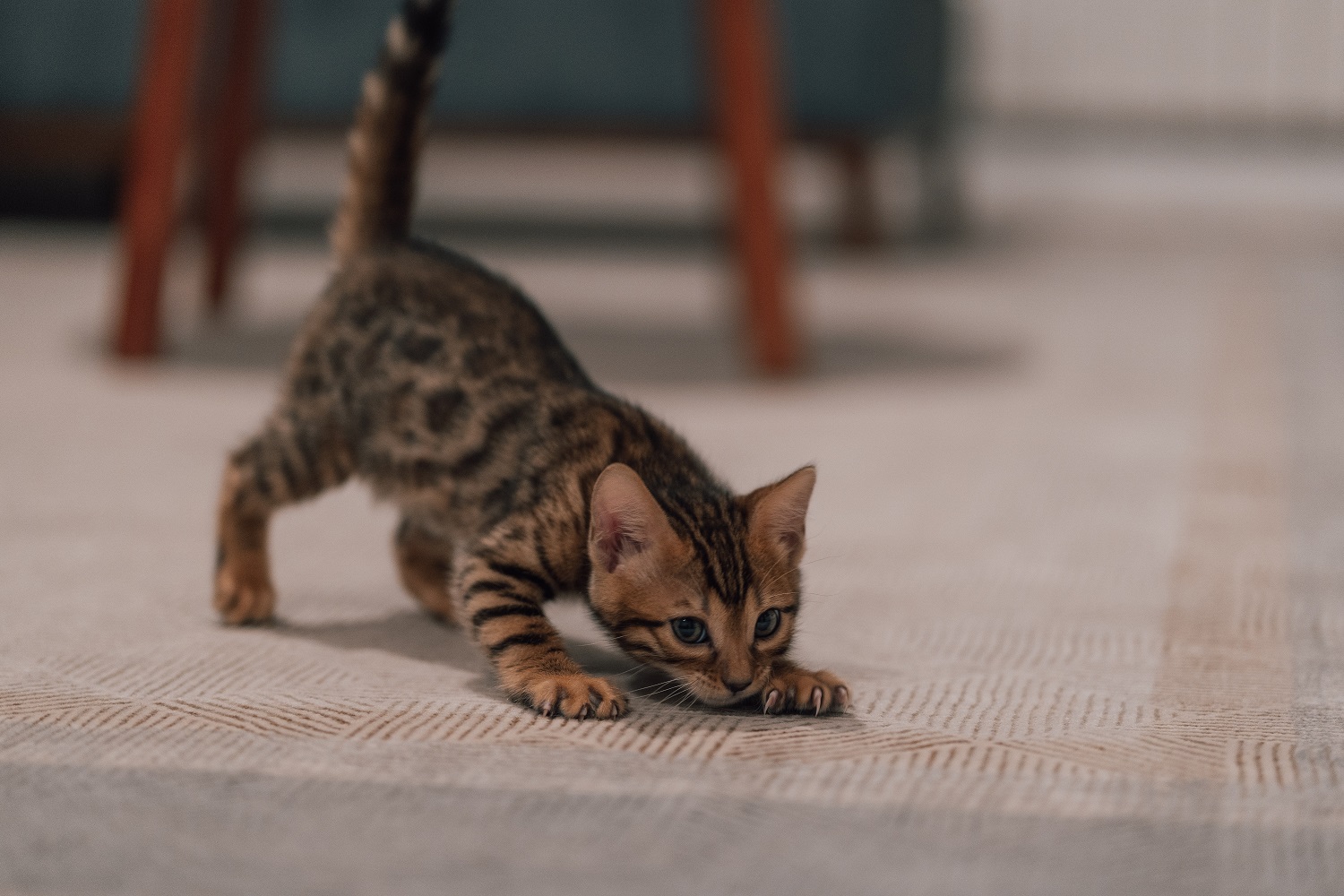If you’ve ever caught your kitten doing that sideways strut, kind of like a tiny crab on a mission, you’re not alone. It’s weird. It’s hilarious. And it makes you wonder: what in the world is going on with this little floof?
Good news: that sideways walk is totally normal, and usually nothing to worry about. Let’s break down the reasons your kitten might be busting out their best crab-walk impression.
Play Mode Activated
Kittens are tiny chaos machines. When they get excited or playful, all bets are off. That sideways shuffle? It’s just your kitten trying to act like a big, scary predator while looking like a fuzzy popcorn kernel.
The puffed-up fur, arched back, and sideways bounce are all part of what’s called “play aggression.” It’s pretend fighting and pouncing. Kitten style. Totally normal, and super cute.
Practicing Pounce Tactics
That sideways movement actually helps your kitten with balance and coordination. Think of it as baby parkour training. They’re figuring out how to leap, land, and make dramatic entrances.
By walking sideways, your kitten is:
- Practicing quick direction changes
- Showing off to their littermates (or you!)
- Honing their ninja skills for future zoomies
Showing Off or Feeling Spicy
Sometimes, the sideways walk is part of your kitten trying to look big and tough. (Spoiler: they are neither.) But in their minds, puffing up and strutting sideways is an intimidating show of force.
It’s often seen in moments of excitement or overstimulation, especially during play. But sometimes, they’re just feeling dramatic. Honestly, same.

Sometimes, I just can’t resist a good play session, and I get so excited that I end up wobbling all over the place. It’s like my little legs just can’t keep up with all the fun I’m having! My humans say it’s totally normal for kittens like me to have a wobbly walk. Something about learning how to… movements or something? I don’t know what they’re talking about. I just think it adds to my charm…
Joey
Fear or Startle Response
If your kitten suddenly starts walking sideways after a loud noise or a surprise encounter with the vacuum cleaner, it might be a sign they’re a little spooked.
In that case, the sideways stance is part of a defensive posture: arched back, puffed tail, eyes wide. They’re trying to say: “Back off, world! I’m ferocious!” (Again: not really, but we’ll let them have this one.)
Is It Ever Something to Worry About?
Most of the time, the sideways walk is totally normal kitten behavior. But keep an eye out for anything that seems off, like:
- Loss of coordination
- Repeated falling or stumbling
- Head tilting
- Seizure-like movements
If your kitten’s sideways walk looks more like a struggle than a strut, it’s best to check with your vet. Better safe than sorry.
Final Thoughts: Let the Crabby Cutie Strut
Your kitten’s sideways walk is just one more reason they’re endlessly entertaining. It’s playful, instinctual, and honestly? Pretty impressive.
So next time your little furball goes full crab-mode, grab your phone, record the moment, and enjoy the show. You’ve got a front-row seat to kitten weirdness. And that’s a beautiful thing.
Sources:
– Cornell Feline Health Center – Aggression in Cats (https://www.vet.cornell.edu/departments-centers-and-institutes/cornell-feline-health-center/health-information/feline-health-topics/aggression-cats)
– ASPCA – General Cat Care & Behavior (https://www.aspca.org/pet-care/cat-care/general-cat-care)
– VCA Hospitals – Kitten Behavior and Training (https://vcahospitals.com/know-your-pet/kitten-behavior-and-training)
– PetMD – Why Do Kittens Arch Their Backs? (https://www.petmd.com/cat/behavior/evr_ct_why-do-kittens-arch-their-backs)
– iCatCare – Understanding Feline Body Language (https://icatcare.org/advice/understanding-feline-body-language/)
Recent Posts
Your Cat Might Be a Furry Little Healer… or at Least a Fuzzy Alarm System If you’ve ever had your cat suddenly become extra clingy when you’re under the weather, you’re not alone. From...
Cats are experts at hiding things, socks under furniture, their disdain for your playlist, and, unfortunately, symptoms of illness. In the wild, showing weakness could make them a target, so even...


